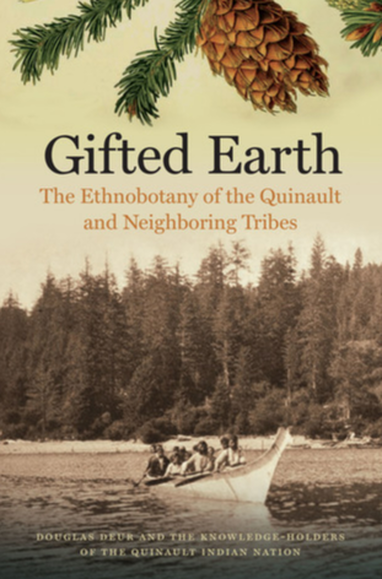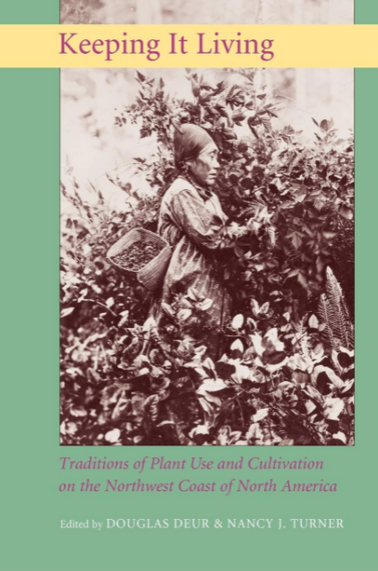Polk SWCD is honored to partner with the Confederated Tribes of Grand Ronde on a grant through the Regional Conservation Partnership Program (RCPP) of the Natural Resources Conservation Service (NRCS). Our combined efforts will enhance and restore Oregon white oak habitat and wildlife species in Polk County. As the original caretakers of Willamette Valley, we can learn a lot from our partners in conservation.
This two-part video series was produced in partnership with the Confederated Tribes of Grand Ronde, the Luckiamute Watershed Council, and with additional funding support from the Willamette Habitat Restoration fund and Benton Soil & Water Conservation District.
This two-part video series was produced in partnership with the Confederated Tribes of Grand Ronde, the Luckiamute Watershed Council, and with additional funding support from the Willamette Habitat Restoration fund and Benton Soil & Water Conservation District.
|
|
CONCEPTS OF TEK In ‘Concepts of TEK’, Lindsay McClary, the Restoration Ecologist for the Confederated Tribes of Grand Ronde, sets the scene at the tribe’s 662-acre conservation parcel, Noble Oaks. This land was reacquired through the Willamette Wildlife Mitigation Program and partnership with the Nature Conservancy. Greg Archuleta, Cultural Policy Analyst, and member of the Confederated Tribes of Grand Ronde, discusses the meaning and tribal perspective of TEK with an emphasis on people’s interaction and relationship with the landscape. The Tribe desires to restore the Noble Oaks conservation parcel to its native habitat with a diversity of plant life. |
|
|
PRACTICAL TEK In the 2nd video, you’ll learn about practical applications for landowners to incorporate TEK into their landscape management. Historically, the Willamette Valley was maintained by indigenous fire practices. Without that practice, encroachment would occur from trees, grasses and invasive species. Jeremy Ojua, the Tribe’s Native Plant Nursery Manager gives us a tour of the nursery and discusses growing and harvesting culturally significant, native plants and cultural first foods. Karin Stutzman, a participant in the RCPP grant, practices what she preaches and highlights ways that TEK was incorporated into her land management practices. It takes a lot of hard work, but the benefits to the land are significant. |
|
|
CULTURAL BURNING On June 29, 2023, members of the Confederated Tribes of Siletz Indians and The Confederated Tribes of Grand Ronde led a cultural burn at our property, Smithfield Oaks. This event was both a training opportunity for Tribal youth interns participating in the Traditional Ecological Inquiry Program (TEIP), and also an opportunity to re-kindle the relationship between these oaks and fire, and the Tribes who have stewarded this land with seasonal burns since time immemorial. The video takes you on a journey on how and why cultural burning is used as a land management tool by the Tribes throughout the Willamette Valley, and shows you what this experience was like on June 29, 2023 at Smithfield Oaks. Thank you to Brian Bull for producing this beautiful video, and thank you to the following groups and organizations that were involved in the cooperation and coordination of this cultural burn:
|
TEK Resources
|
Tribal Histories of the Willamette Valley
Author: David G. Lewis The Willamette Valley is rich with history—its riverbanks, forests, and mountains home to the tribes of Kalapuya, Chinook, Molalla, and more for thousands of years. This history has been largely unrecorded, incomplete, poorly researched, or partially told. In these stories, enriched by photographs and maps, Oregon Indigenous historian David G. Lewis combines years of researching historical documents and collecting oral stories, highlighting Native perspectives about the history of the Willamette Valley as they experienced it. |
|
Gifted Earth: The Ethnobotany of the Quinault and Neighboring Tribes
Author: Douglas Deur, Associate Research Professor, Anthropology, PSU Possibly the most comprehensive and user-friendly ethnobotanical guidebook available in the Pacific Northwest, Gifted Earth features traditional Native American plant knowledge, detailing the use of plants for food, medicines, and materials. It presents a rich and living tradition of plant use within the Quinault Indian Nation in a volume collaboratively developed and endorsed by that tribe. A celebration of enduring Native American knowledge, this book will help non-specialists as they discover the potential of the region's wild plants, learning how to identify, gather, and use many of the plants that they encounter in the Northwestern landscape. Part ethnobotanical guide and part "how-to" manual, Gifted Earth also prepares plant users for the minor hazards and pitfalls that accompany their quest--from how to avoid accidentally eating a bug hidden within a salal berry to how to avoid blisters when peeling the tender stalks of cow parsnip. As beautiful as it is informative, Gifted Earth sets the tone for a new generation of ethnobotanical guides that are informed by the values, vision, and voice of Native American communities eager to promote a sustainable, balanced relationship between plant users and the rich plant communities of the Pacific Northwest. |
|
Keeping It Living: Traditions of Plant Use and Cultivation on the Northwest Coast of North America
Authors: Douglas Deur & Nancy J. Turner The European explorers who first visited the Northwest Coast of North America assumed that the entire region was virtually untouched wilderness whose occupants used the land only minimally, hunting and gathering shoots, roots, and berries that were peripheral to a diet and culture focused on salmon. Colonizers who followed the explorers used these claims to justify the displacement of Native groups from their lands. Scholars now understand, however, that Northwest Coast peoples were actively cultivating plants well before their first contact with Europeans. This book is the first comprehensive overview of how Northwest Coast Native Americans managed the landscape and cared for the plant communities on which they depended. Bringing together some of the world's most prominent specialists on Northwest Coast cultures, Keeping It Living tells the story of traditional plant cultivation practices found from the Oregon coast to Southeast Alaska. With contributions from ethnobotanists, archaeologists, anthropologists, geographers, ecologists, and Native American scholars and elders, Keeping It Living documents practices, many unknown to European peoples, that involve manipulating plants as well as their environments in ways that enhanced culturally preferred plants and plant communities. It describes how indigenous peoples of this region used and cared for over 300 different species of plants, from the lofty red cedar to diminutive plants of backwater bogs. |
|
Ethnobotany of the Coos, Lower Umpqua, and Siuslaw Indians
Author: Patricia Wherat-Phillips Very little has been published until now on the ethnobotany of western Oregon indigenous peoples. Ethnobotany of the Coos, Lower Umpqua, and Siuslaw Indians documents the use of plants by these closely-related coastal tribes, covering a geographical area that extends roughly from Cape Perpetua on the central coast, south to the Coquille River, and from the Coast Range west to the Pacific shore. With a focus on native plants and their traditional uses, it also includes mention of farming crops, as well as the highly invasive Himalayan blackberry, which some Oregon coast Indians called the “white man’s berry.” The cultures of the Coos Bay, Lower Umpqua and Siuslaw are distinct from the Athabaskan speaking people to the south, and the Alsea to the north. Today, many tribal members are reviving ancient arts of basket weaving and woodworking, and many now participate in annual intertribal canoe events. Ethnobotany of the Coos, Lower Umpqua, and Siuslaw Indians contributes to this cultural renaissance by filling an important gap in the historical record. It is an invaluable resource for anyone who wishes to learn about the indigenous cultures of the central and southern Oregon coast, as well as those who are interested in Pacific Northwest plants and their cultural uses. |





